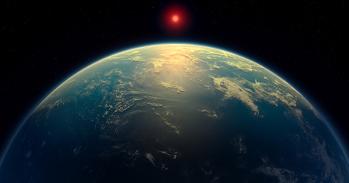
Shagita Gounden is a systems engineer working on the world’s largest radio telescope, an Executive MBA candidate at Cambridge Judge Business School, and a member of St Edmund’s College. Here, she tells us about being part of a massive global science project, the benefits of working with an international team, and how it makes her hopeful as a South African.
Shagita Gounden is a systems engineer working on the world’s largest radio telescope, an Executive MBA candidate at Cambridge Judge Business School, and a member of St Edmund’s College. Here, she tells us about being part of a massive global science project, the benefits of working with an international team, and how it makes her hopeful as a South African.
As a systems engineer, I am part of the team responsible for designing the software for the world’s largest radio telescope, the Square Kilometre Array (SKA). The team includes representatives from over 100 organisations across 20 countries. My main motivation is the chance to be part of a global collaboration that is contributing to creating an instrument of this scale that will ultimately lead to expanding our knowledge of the universe.
To be part of a project of this scale, that is breaking new ground in engineering and astronomy, is a true privilege. A big part of my day-to-day is the interaction with other engineers and astronomers from all over the world. Our HQ, based at the Jodrell Bank Observatory, brings together engineers and scientists from all over the world. This is probably the richest part of my work experience – the exposure to and engagement with a diverse group of people.
The University of Cambridge, specifically the Institute of Astronomy and the Cavendish Laboratory, is heavily involved in the design of a critical component of the SKA – the Science Data Processor (SDP), which essentially serves as the ‘brain’ of the SKA, processing raw data into images. It was through regularly visiting my colleagues in Cambridge that I was motivated to enrol at the Cambridge Judge Business School as an Executive MBA candidate.
The most interesting day I’ve had so far was when I visited the site of the telescope in South Africa’s Karoo Desert and saw the first assembled dish of what will eventually be 128 dishes that make up the SKA. It felt incredibly exciting to witness the beginnings of this project and to imagine the possibilities that will be realised in this vast, empty space. As an engineer and as a South African, I was overcome by a swell of hope.
I hope my research will lead to new and interesting scientific discoveries that have the potential to upend or enhance what we know about physics and the universe. I am also just as excited, if not more, about the project’s ability to inspire and build the next generation of scientists and engineers and make a strong case for similar projects of this scale.
Ensure that you are passionate and inspired by whatever you want to do, as it is this passion that will see you through any challenges that you may encounter on your path. There is no obstacle to conviction.

The text in this work is licensed under a Creative Commons Attribution 4.0 International License. Images, including our videos, are Copyright ©University of Cambridge and licensors/contributors as identified. All rights reserved. We make our image and video content available in a number of ways – as here, on our main website under its Terms and conditions, and on a range of channels including social media that permit your use and sharing of our content under their respective Terms.




